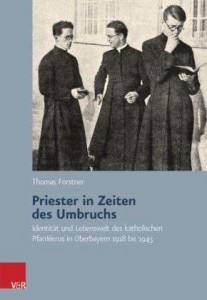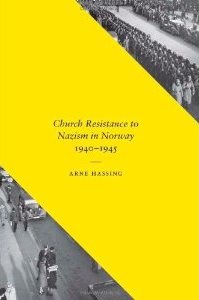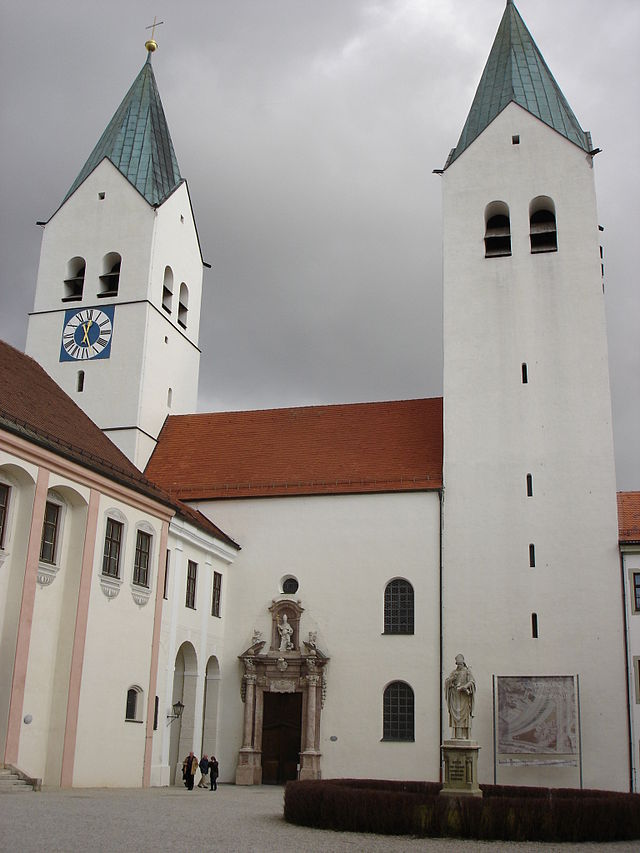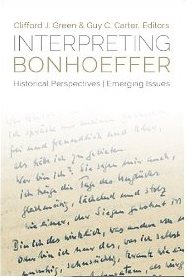Contemporary Church History Quarterly
Volume 20, Number 2 (June 2014)
15,000 days in the Life of a Bishop: Long-Term Project Prepares an On-Line Edition of the Diaries of Cardinal Michael von Faulhaber, Archbishop of Munich
By Hubert Wolf, University of Münster [1]
Ever since 2012, a corpus of sources has become accessible in the Archdiocesan Archive of Munich and Freising, which historians have long awaited: the diaries of Cardinal Michael von Faulhaber (1869-1952), which were predominantly written in a shorthand called “Gabelsberger.” Johannes Waxenberger (1915-2010), the last secretary of the archbishop of Munich and Freising, had taken the diaries – against the archbishop”s testamentary will – and kept them in a cardboard box under his bed for decades. That the cardinal had kept a diary was known to researchers. Waxenberger, however, refused to release the records and only transcribed singular pages of the diaries for the purpose of a few academic studies. It was only in 1999 that he concluded an agreement with Cardinal Friedrich Wetter, archbishop of Munich until 2008, according to which the diaries were to be restored to the Archiepiscopal See of Munich after his death, which occurred on June 25, 2010.
This longtime-hidden treasure will now be edited by researchers and made accessible online for anyone to view. The German Research Foundation (DFG) has approved a long-term project for a duration of twelve years, for which the historian Prof Dr. Andreas Wirsching, head of the Institute of Contemporary History (IFZ), and I are responsible. Concise but elaborate annotations will furnish information on the individuals and the most important issues recorded in the diaries. The edition is not only intended for use by historians and theologians, but also by scholars from the humanities, social sciences and cultural studies. Sources edited online are also suitable for the use in university teaching, which the “Critical Online Edition of the Nuncial Reports of Eugenio Pacelli (1917-1929)” in Münster has already proven. The new project will profit from this in many ways. The first texts that Faulhaber wrote during the eventful period from 1917 to 1919, which are of utmost importance for his biography, will be available online by late 2014 at www.faulhaber-edition.de.
A close look behind the scenes of official correspondences
Michael Faulhaber was bishop of Speyer from 1911 to 1917 and archbishop of Munich and Freising from 1917 until his death in 1952. He was of humble birth, being the son of a baker and farmer from the Lower Franconian village of Heidenfeld near Schweinfurt. In 1913, however, he was ennobled and created a cardinal in 1921. Faulhaber was an excellent theologian, an articulate pioneer of political Catholicism, and a champion of Catholic interests. His influence reached far beyond Germany”s borders and those of the Catholic Church. Faulhaber had marvelous connections with the Bavarian people and with the elites of Church, politics, nobility and the media at home and abroad. He was a close friend of Pope Pius XII, but also negotiated with Adolf Hitler, Theodore Roosevelt and Konrad Adenauer. The numerous interlocutors that Faulhaber received day by day came from all social classes. It is especially through his published sermons that he reached a mass audience. Already in his lifetime, church members admired him, but he remained highly controversial, especially due to his stance during the period of National Socialism.
The fact that a representative of the Church wrote down his experiences and thoughts in a detailed diary for over four decades is a stroke of luck for historians. Since the Catholic Church is a “global player” and Faulhaber had excellent foreign contacts, there are various possibilities to approach the issues mentioned in the diaries on an internationally comparative level.
The diaries represent a corpus of sources that is unique in terms of quality and quantity. They have been fully preserved for the period from 1911 to 1952. The diaries consist of 32 volumes in notebook format comprising more than 4,000 pages that primarily contain succinct entries on the individuals Faulhaber met as well as brief summaries of their conversations. In total, Faulhaber recorded about 52,000 visits. These diaries are often referred to as a “visitors’ diary,” in order to distinguish them from other, less comprehensive diaries that Faulhaber kept. He, however, used it also to record information he considered important with regard to his views on key political, social or religious events. Whenever he considered such issues to a greater depth or had particularly important conversations, he added ample supplementary sheets, of which approximately 1,000 have been recorded so far. The average length of a supplementary sheet ranges from one to four pages in octavo. The edition will thus offer a detailed view of approximately 15,000 days of Faulhaber”s life.
According to what is known about him so far, Faulhaber was a great and reliable observer, who mostly wrote soberly, but sometimes used very frank words to phrase his opinions. His records were not only influenced by his own observations and experiences, but also by messages received orally and by letter and by reports from newspapers and radio transmissions. He then enhanced such communication with his own interpretations. The entries are usually brief, being written down shortly after the depicted event had taken place. The notes apparently served him as a sort of reminder, not being intended for publication, which is why Faulhaber had the possibility to write down confidential and maybe even incriminating contents of his conversations.
The source is therefore to be considered a highly authentic relic that was transmitted unintentionally. The private records allow for an exciting view of a church dignitary”s emotional world and behind the scenes of official correspondences and official statements. They complement the corpora of sources already accessible, so that new perspectives and motives for his actions may be discovered, which could so far scarcely be delineated. The diaries represent a key to open up his comprehensive papers and to analyze them from particular perspectives. Ahead of schedule, Cardinal Friedrich Wetter made the larger part of Faulhaber”s papers in the archdiocesan archive of Munich and Freising available to research in 2002 on the occasion of the fiftieth anniversary of his death. It is easily accessible, but has only been analyzed rudimentarily. There is no comparable corpus for other important German church representatives.
The supplementary sheets are scattered among Faulhaber’s papers, but many of them emerged recently in the records turned over by Waxenberger. So far, only a few supplementary sheets have been edited by Ludwig Volk (Akten Kardinal Michael von Faulhabers 1917-1945, 2 vol., Mainz 1975/1978). These documents are frequently quoted by researchers and give proof of this source’s potential for historical research. Ludwig Volk saw only a brief selection of the many items Waxenberger withheld from Faulhaber’s papers. It may thus be assumed that those supplementary sheets that are politically charged are only casino online now soon to be made accessible to researchers and the general public.
Gabelsberger Centre of Excellence is to make accessible further archival holdings
The historical analysis of the diaries and supplementary sheets is complicated by the fact that it was only the dates and names of his interlocutors that he wrote down in longhand, as well as geographical, political and ecclesiastical or religious terms, though often in abbreviated form. For the rest he used Gabelsberger, which was the most widespread short hand in Germany before the introduction of the German Unified Shorthand (Deutsche Einheitskurzschrift) in 1924. Today, only few experts know how to decipher Gabelsberger. The long-term project therefore also comprises stenographic training, which pursues the aim of establishing a centre of excellence for shorthand in Munich. This training was financially supported by the Fritz Thyssen Stiftung, which in general sponsored the preliminary work of the long-term project. With the help of those newly trained experts on the cultural technique of reading Gabelsberger further comprehensive archival holdings will be made accessible to researchers. A survey has revealed that German archives hold ample collections of the nineteenth and twentieth century written in Gabelsberger.
Online edition offers numerous advantages
The online edition aspires to offer a flexible, multidimensional technique of editing, which permits the contemporary display of two textual versions of each diary entry in arbitrary combination: first, the scanned facsimile; second, the precise transcription; and third, an extensive reading version that contains references to supplementary sheets, spelled-out abbreviations, other possible readings and indications of the respective stages. Annotations will appear as pop-ups. The database-based online edition offers numerous advantages compared to a printed volume:
(1) Accessibility: the project supports the principle of Open Access. The diaries and the supplementary sheets will be accessible all over the world, for free and comparably fast and easy.
(2) Efficiency: an online edition is considerably more low-priced and resource-efficient, especially given the amplitude of sources.
(3) Flexibility and velocity: the texts and the pertaining annotations are to be uploaded in sections – and thereby accessible more quickly. Moreover, particularly interesting parts of various years can be transcribed and made accessible online together with the respective supplementary sheets, even before the other documents of that particular year are transcribed and all supplementary sheets have been retrieved. Belated additions and modifications are not a problem, for instance in case further relevant documents are found among Faulhaber”s comprehensive papers.
(4) Transparency and meticulousness: an online edition offers the opportunity to mark cases of doubt as well as various readings more thoroughly than a traditional print edition. This is a huge advantage considering the complexity of the material”s content and the difficulties that are to be expected when deciphering Gabelsberger. The multidimensional technique of editing allows for excellent attention to detail as well as for legibility.
(5) Linking possibilities: the documents in the database can be linked with each other, but also with external corpora of sources, such as image or audio files.
(6) User-friendliness: among the most important advantages of the online edition are the comprehensive search options, the possibility to copy the texts easily and the multi-linking with the entries in the biographical as well as in the keyword databases. Moreover, online editions are comparably easy to analyze from a statistic point of view, which may raise new questions, e.g. as far as writing processes and the development of terminologies are concerned.
(7) Interactivity: online editions make it easier for users to forward advice and recommendations to the project team. There is going to be a contact form on the website of the Faulhaber-edition.
The online edition is based on software called “DENQ” (Digital edition of contemporary sources), which was developed by Dr. Jörg Hörnschemeyer from the German Historical Institute (DHI) in Rome in cooperation with the DHI London. The IFZ assumes the hosting of the database and of the website as well as of the project”s internal server platform, which contains a protected area. Long-term storage is secured within the frame of the Institute”s close cooperation with the Bavarian State Library.
State of research and possible questions
The biographical literature on Faulhaber”s fellow bishops is not very broad yet. Nonetheless, it offers a basis to compare what is representative and what is specific of Faulhaber”s biography. Neither a biography based on source material nor partial biographies of Munich”s spiritual leader have been published so far. A history of the archdiocese of Munich and Freising in the first half of the twentieth century is missing as well.
What is more, the edition is going to be illuminating on many fundamental questions of Germany’s and Europe’s history. In his notes, Faulhaber reported on the German Empire, the First World War, the Bavarian Soviet Republic and the Weimar Republic, the Nazi dictatorship and the occupation period as well as on the beginnings of the Federal Republic of Germany. This period saw several surges of secularization and re-confessionalization as well as fundamental theological developments. Many questions that Faulhaber was confronted with are still current today, and essential for the self-understanding of the Catholic Church.
Faulhaber”s diaries and the pertaining supplementary sheets are of particular interest as far as several fundamental issues are concerned, which are in various ways interlinked: the relationship of religion and politics, especially that of the Catholic Church and the “Third Reich,” the relationships with other religions and confessions, and the Church”s structures and networks. Moreover, it is concerned with questions of cultural, religious, and theological history and deals with issues such as emotions and piety.
The interdisciplinary team of the long-term project began its work on October 31, 2013 and cooperates closely with Dr Peter Pfister, director of the archdiocesan archive of Munich and Freising. Members are Dr. Erich Ruff, an expert on Gabelsberger, Dr. Philipp Gahn, a Catholic theologian, Dr. Peer Oliver Volkmann, a historian, Matthias Bornschlegel, a computer scientist, and Carina Knorz and Franziska Nicolay, graduate students, who will critically examine the diaries in their dissertations.
Links related to the project:
Hubert Wolf: http://www.uni-muenster.de/FB2/personen/mnkg/seminar/wolf.html
Andreas Wirsching: http://www.ifz-muenchen.de/das-institut/mitarbeiterinnen/ea/mitarbeiter/andreas-wirsching/
Edition der Nuntiaturberichte Eugenio Pacellis: http://www.pacelli-edition.de/
Jörg Hörnschemeyer: http://dhi-roma.it/team.html
Peter Pfister: http://www.erzbistum-muenchen.de/Page005788.aspx
Erich Ruff: http://www.erichruff.gmxhome.de/
Philipp Gahn: http://www.ifz-muenchen.de/das-institut/mitarbeiterinnen/ea/mitarbeiter/philipp-gahn/
Peer Oliver Volkmann: http://www.ifz-muenchen.de/das-institut/mitarbeiterinnen/ea/mitarbeiter/peer-oliver-volkmann/
Matthias Bornschlegel: http://www.ifz-muenchen.de/das-institut/mitarbeiterinnen/ea/mitarbeiter/matthias-bornschlegel/
Carina Knorz: http://www.ifz-muenchen.de/das-institut/mitarbeiterinnen/ea/mitarbeiter/carina-knorz/
Franziska Nicolay: http://www.ifz-muenchen.de/das-institut/mitarbeiterinnen/ea/mitarbeiter/franziska-nicolay/
[1] I would like to thank Elisabeth-Marie Richter for translating the present article and Holger Arning for his contributions to the concept of the text.

 From the outset, Forstner makes it clear that his book will depart from the following works: Thomas Breuer’s Verordneter Wandel? Der Widerstreit zwischen nationalsozialistischem Herrschaftsanspruch und traditionaler Lebenswelt im Erzbistum Bamberg (Mainz: Matthias-Grünewald, 1992); Thomas Fandel’s Konfession und Nationalsozialismus: Evangelische und katholische Pfarrer in der Pfalz 1930-1939 (Paderborn: Ferdinand Schöningh, 1997); and Tobias Haaf’s Von volksverhetzenden Pfaffen und falschen Propheten: Klerus und Kirchenvolk im Bistum Würzburg in der Auseinandersetzung mit dem Nationalsozialismus (Würzburg: Ferdinand Schöningh, 2005). All of these works, he argues, centered primarily on questions relating to resistance and politics without significant consideration of priestly culture and everyday life. Forstner places my own 2004 study, Resisting the Third Reich: The Catholic Clergy in Hitler’s Berlin (DeKalb, Illinois: Northern Illinois University Press) in the same category, though he does acknowledge that my work included “some” discussion of priestly culture. By contrast to these studies, Forstner seeks to understand specifically the all-too often hermetic world of Munich’s clergy, especially their pastoral training, outlook, and practices, quite closely akin to Monika Nickel’s Habilitation, Die Passauer theologisch-praktische Monatsschrift: Ein Standesorgan des Bayerischen Klerus an der Wende vom 19. Zum 20. Jahrhundert (Passau: Dietmar Klinger, 2004), a study upon which Forstner lavishes great praise. Nickel’s work examined pastoral practice addressed in the Passau Monthly of Practical Theology.
From the outset, Forstner makes it clear that his book will depart from the following works: Thomas Breuer’s Verordneter Wandel? Der Widerstreit zwischen nationalsozialistischem Herrschaftsanspruch und traditionaler Lebenswelt im Erzbistum Bamberg (Mainz: Matthias-Grünewald, 1992); Thomas Fandel’s Konfession und Nationalsozialismus: Evangelische und katholische Pfarrer in der Pfalz 1930-1939 (Paderborn: Ferdinand Schöningh, 1997); and Tobias Haaf’s Von volksverhetzenden Pfaffen und falschen Propheten: Klerus und Kirchenvolk im Bistum Würzburg in der Auseinandersetzung mit dem Nationalsozialismus (Würzburg: Ferdinand Schöningh, 2005). All of these works, he argues, centered primarily on questions relating to resistance and politics without significant consideration of priestly culture and everyday life. Forstner places my own 2004 study, Resisting the Third Reich: The Catholic Clergy in Hitler’s Berlin (DeKalb, Illinois: Northern Illinois University Press) in the same category, though he does acknowledge that my work included “some” discussion of priestly culture. By contrast to these studies, Forstner seeks to understand specifically the all-too often hermetic world of Munich’s clergy, especially their pastoral training, outlook, and practices, quite closely akin to Monika Nickel’s Habilitation, Die Passauer theologisch-praktische Monatsschrift: Ein Standesorgan des Bayerischen Klerus an der Wende vom 19. Zum 20. Jahrhundert (Passau: Dietmar Klinger, 2004), a study upon which Forstner lavishes great praise. Nickel’s work examined pastoral practice addressed in the Passau Monthly of Practical Theology. The bulk of the book, which is written in a somewhat convoluted Germanic style, but competently translated into English by Rebecca Pohl, is based on a thorough examination of all of Hitler’s surviving speeches and writings. Bucher’s main contention is that Hitler’s worldview was far more than just an ideology adopted for tactical reasons in order to gain political support. Rather, in Bucher’s view, Hitler’s ideas constituted a theology, even though it was an intellectually crude and merciless construct, and based on an abominable racism. Bucher is well aware that speaking of Hitler’s theology is provocative because it seems to associate what Christians believe with one of the worst criminals of our era. So he is careful to ensure that he cannot be accused of trying to undertake any kind of vindication. His task is therefore one of explanation rather than condemnation, let alone approbation. In this he succeeds with consummate skill.
The bulk of the book, which is written in a somewhat convoluted Germanic style, but competently translated into English by Rebecca Pohl, is based on a thorough examination of all of Hitler’s surviving speeches and writings. Bucher’s main contention is that Hitler’s worldview was far more than just an ideology adopted for tactical reasons in order to gain political support. Rather, in Bucher’s view, Hitler’s ideas constituted a theology, even though it was an intellectually crude and merciless construct, and based on an abominable racism. Bucher is well aware that speaking of Hitler’s theology is provocative because it seems to associate what Christians believe with one of the worst criminals of our era. So he is careful to ensure that he cannot be accused of trying to undertake any kind of vindication. His task is therefore one of explanation rather than condemnation, let alone approbation. In this he succeeds with consummate skill. Dean Stroud’s Preaching in Hitler’s Shadow: Sermons of Resistance in the Third Reich uses a broad definition of resistance along the lines of Tec’s definition. This is problematic, because his focus is preaching in the German Confessing Church. In his 48-page introduction to the historical context, Stroud does not engage the vast literature on resistance in Germany or offer his opinion on the competing definitions of resistance by scholars such as Martin Broszat, Hans Mommsen, Peter Hoffmann, Detlev Peukert, and many others. But one can easily ascertain that he considers pastors in the Confessing Church to be a part of the Resistance, that he believes resistance among pastors was more wide spread than is acknowledged, and that he views Christianity as a radical alternative to Nazism. It is self-evident to Stroud that the thirteen sermons he includes in his book are “sermons of resistance.”
Dean Stroud’s Preaching in Hitler’s Shadow: Sermons of Resistance in the Third Reich uses a broad definition of resistance along the lines of Tec’s definition. This is problematic, because his focus is preaching in the German Confessing Church. In his 48-page introduction to the historical context, Stroud does not engage the vast literature on resistance in Germany or offer his opinion on the competing definitions of resistance by scholars such as Martin Broszat, Hans Mommsen, Peter Hoffmann, Detlev Peukert, and many others. But one can easily ascertain that he considers pastors in the Confessing Church to be a part of the Resistance, that he believes resistance among pastors was more wide spread than is acknowledged, and that he views Christianity as a radical alternative to Nazism. It is self-evident to Stroud that the thirteen sermons he includes in his book are “sermons of resistance.” He begins with an account of the Norwegian reception of the German Church Struggle in the pre-1940 period, since he rightly notes that both nations had Lutheranism as their official Protestant state religion and as their traditional focus of loyalty. The challenge of Nazi ideology and its attempt to corrupt Luther’s teachings was therefore immediately recognized. Hassing pays tribute to the skilful manner in which Bishop Berggrav differentiated the Norwegian understanding of Luther from that held by many theologians in Germany. He also notes the skill with which the Norwegian church leaders were able to forge an alliance amongst themselves and resolve long-held theological antagonisms, in order to oppose the invaders and their supporters in Norway.
He begins with an account of the Norwegian reception of the German Church Struggle in the pre-1940 period, since he rightly notes that both nations had Lutheranism as their official Protestant state religion and as their traditional focus of loyalty. The challenge of Nazi ideology and its attempt to corrupt Luther’s teachings was therefore immediately recognized. Hassing pays tribute to the skilful manner in which Bishop Berggrav differentiated the Norwegian understanding of Luther from that held by many theologians in Germany. He also notes the skill with which the Norwegian church leaders were able to forge an alliance amongst themselves and resolve long-held theological antagonisms, in order to oppose the invaders and their supporters in Norway. Lang was born in Scotland, the son of a distinguished Presbyterian minister. When he came to study in Oxford, he switched allegiance to a moderate high Anglicanism and opted to be ordained in the Church of England. His gifts were obvious and he quickly gained preferment. In fact, in 1890, at the age of 36, he became a suffragan or assistant bishop, and at the age of 44 was selected to be Archbishop of York, the second highest appointment in the English hierarchy. He spent twenty years there, before being moved to Canterbury in 1928. In Beaken’s view, it was hardly his fault that he was appointed to York too early and to Canterbury too late in life. He was a loner and a workaholic, and a bachelor who had difficulty in relating to others even of his own class and complexion. As a result, he never established any personal associations and had no following to uphold his legacy. This biography will, however, serve to record his achievements and gives a sympathetic analysis of Lang’s actions during the difficult and traumatic years of the 1930s.
Lang was born in Scotland, the son of a distinguished Presbyterian minister. When he came to study in Oxford, he switched allegiance to a moderate high Anglicanism and opted to be ordained in the Church of England. His gifts were obvious and he quickly gained preferment. In fact, in 1890, at the age of 36, he became a suffragan or assistant bishop, and at the age of 44 was selected to be Archbishop of York, the second highest appointment in the English hierarchy. He spent twenty years there, before being moved to Canterbury in 1928. In Beaken’s view, it was hardly his fault that he was appointed to York too early and to Canterbury too late in life. He was a loner and a workaholic, and a bachelor who had difficulty in relating to others even of his own class and complexion. As a result, he never established any personal associations and had no following to uphold his legacy. This biography will, however, serve to record his achievements and gives a sympathetic analysis of Lang’s actions during the difficult and traumatic years of the 1930s.

 The tone is of course laudatory, rather than critical. But at least these papers help to set the boundaries within which Bonhoeffer scholarship can flourish today, and thus exclude some of the more exaggerated theories. For example, in recent years, Bonhoeffer has been characterized as a revolutionary, an assassin and an American Evangelical. None of these authors was invited. On the other hand, it is also clear that the theologians and the historians are not always talking on the same wave-length. The latter’s approach is empirical, concrete and historical, whereas the former seem often to engage in highly theoretical, even metaphysical interpretations, which rarely touch down on the solid earth of Nazi Germany. So this book should help to encourage some cross-fertilization in the debates about Bonhoeffer’s legacy.
The tone is of course laudatory, rather than critical. But at least these papers help to set the boundaries within which Bonhoeffer scholarship can flourish today, and thus exclude some of the more exaggerated theories. For example, in recent years, Bonhoeffer has been characterized as a revolutionary, an assassin and an American Evangelical. None of these authors was invited. On the other hand, it is also clear that the theologians and the historians are not always talking on the same wave-length. The latter’s approach is empirical, concrete and historical, whereas the former seem often to engage in highly theoretical, even metaphysical interpretations, which rarely touch down on the solid earth of Nazi Germany. So this book should help to encourage some cross-fertilization in the debates about Bonhoeffer’s legacy. John Stott was born in 1921 in a well-to-do professional family and, as was the custom, went to one of England’s most prestigious private (i.e. “public”) schools, Rugby, where his talents led to his appointment as Head Boy. At the age of seventeen, he had a classic evangelical conversion experience and invited Jesus Christ into his life. This was largely due to the influence of an itinerant Anglican clergyman named Eric Nash, whose mission it was to attract young public school leaders and lead them to a life of Christian witness and service . Nash remained Stott’s mentor for many years and undoubtedly encouraged him to seek ordination as a Church of England priest. This decision was to be a great disappointment to Stott’s family, as was (even more so) his resolve not to be conscripted to do military service at the very moment when the Second World War broke out in 1939. Stott took advantage of the loop-hole which allowed students in training for the ministry to be exempt from military service. He was thus one of the few young men taking his war-time undergraduate degree at Trinity College, Cambridge, after which he moved on to the nearby theological college, Ridley Hall, which resolutely maintained the evangelical tradition of those martyrs burnt at the stake by Queen Mary four centuries earlier.
John Stott was born in 1921 in a well-to-do professional family and, as was the custom, went to one of England’s most prestigious private (i.e. “public”) schools, Rugby, where his talents led to his appointment as Head Boy. At the age of seventeen, he had a classic evangelical conversion experience and invited Jesus Christ into his life. This was largely due to the influence of an itinerant Anglican clergyman named Eric Nash, whose mission it was to attract young public school leaders and lead them to a life of Christian witness and service . Nash remained Stott’s mentor for many years and undoubtedly encouraged him to seek ordination as a Church of England priest. This decision was to be a great disappointment to Stott’s family, as was (even more so) his resolve not to be conscripted to do military service at the very moment when the Second World War broke out in 1939. Stott took advantage of the loop-hole which allowed students in training for the ministry to be exempt from military service. He was thus one of the few young men taking his war-time undergraduate degree at Trinity College, Cambridge, after which he moved on to the nearby theological college, Ridley Hall, which resolutely maintained the evangelical tradition of those martyrs burnt at the stake by Queen Mary four centuries earlier.